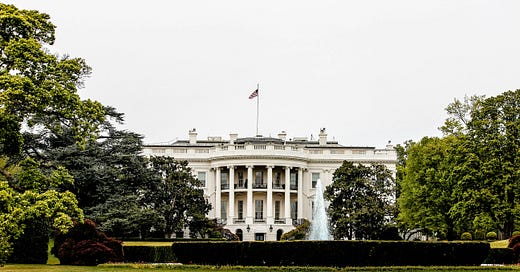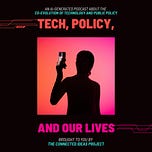A Revolution Beneath the Surface
In the quiet corners of fermenters and bioreactors, a revolution unfolds. It doesn’t grab headlines like rocket launches or AI breakthroughs, but its implications may ripple just as far. Biomanufacturing—the use of biological systems to produce materials, medicines, and energy—is reshaping how we live, how we work, and how we sustain ourselves. It’s a technology that’s as much about creation as it is about connection, weaving together threads of biology, data, and engineering into something entirely new.
The recent U.S. federal report on advancing domestic biomanufacturing offers more than a strategic roadmap; it’s a glimpse into the growing fabric of the bioeconomy and the urgent need to strengthen it. This is not just an economic or technological challenge—it’s an invitation to think about the systems that underpin our future and the values that will guide them. This report is one of the many initiatives the U.S. Government has underway to strengthen the bioeconomy, and in conjunction with the upcoming National Security Commission on Emerging Biotechnology’s final report, marks a set of milestones towards moving the needle in this industry.
The Engine of Progress
Biomanufacturing, at its core, is about transformation. Whether converting sugar into biofuels or programming cells to produce life-saving medicines, it redefines the relationship between raw materials and final products. The report captures this beautifully, showing how biology—nature’s oldest engineer—is being harnessed for solutions that range from sustainable aviation fuels to regenerative medicines.
Yet this transformation isn’t happening in isolation. Biomanufacturing thrives at the intersection of technologies. It relies on artificial intelligence to make sense of vast biological datasets, on robotics to optimize production processes, and on advanced energy systems to power facilities sustainably. These connections—between the biological and the mechanical, the digital and the physical—are what make this moment so extraordinary.
But such integration also exposes vulnerabilities. The U.S. biomanufacturing sector, while rich in innovation, faces significant bottlenecks. Scaling ideas from lab to market often requires infrastructure that doesn’t yet exist or is concentrated overseas. Startups with groundbreaking technologies struggle to find facilities for pilot-scale production. The talent needed to support this ecosystem—from biologists to data scientists—remains in short supply. These challenges, while daunting, underscore the urgency of action.

A Vision for Resilience
The report’s vision for biomanufacturing is expansive yet grounded. It recognizes that growth is not just about building more facilities or training more workers—it’s about designing systems that are resilient, equitable, and deeply connected to their surroundings. This means creating regional hubs where innovation can flourish close to raw materials and local talent. The U.S. government already sees the value of this model, using the (fairly new) Department of Commerce Economic Development Agency’s Regional Tech Hub Program to invest early in those local ecosystems. As Commerce was reviewing applications for those Tech Hub designations in 2023, I joined my fellow NSCEB Commissioners to advocate for biotech-focused programs; today, in Illinois, Indiana, Kansas, and New Hampshire (just to name a few), local innovators, educators, investors, and manufacturers are both building and benefitting from the future of biotech, thanks to buy-in at the federal, state, and local levels.
All this also means rethinking supply chains to prioritize sustainability and security. And it means fostering collaboration not just within the U.S. but with global allies who share a commitment to responsible progress.
Consider the potential of biomanufacturing to transform energy systems. Imagine a future where bio-based materials replace petroleum-derived plastics, where agricultural waste becomes a source of renewable fuels, and where CO2 emissions are captured and repurposed into new products. These are not just technical possibilities; they are pathways to a cleaner, more circular economy. But they require infrastructure that aligns innovation with implementation, from decentralized bioreactors to advanced logistics networks.
From Policy to Practice
Turning this vision into reality will take more than funding or incentives—it will require cultural shifts. The way we think about production, labor, and even nature itself must evolve. Biomanufacturing challenges the traditional dichotomy between human-made and natural. It asks us to see technology as an extension of ecology, a tool not just for extracting value but for restoring balance.
Already, there are glimpses of this future. A facility in Nebraska turns corn into biodegradable plastics with a fraction of the emissions of traditional methods. In Minnesota, pilot-scale infrastructure is enabling startups to test bio-based innovations that could redefine industries. These are small steps, but they are part of a much larger journey—a journey that the U.S. must lead with intention and integrity.
A Quiet Call to Action
There’s a subtle urgency in the report, a recognition that the stakes are high. Biomanufacturing isn’t just about competitiveness—it’s about resilience in a world of uncertainty. The next pandemic, the next supply chain disruption, or the next environmental crisis will test the systems we build today. Strengthening domestic biomanufacturing is not just an economic imperative; it’s a moral one.
But this is not a story of crisis. It’s a story of opportunity. The bioeconomy represents a chance to create industries that are not just profitable but principled, to design systems that honor both human ingenuity and the planet’s limits. It’s a chance to lead not through dominance but through collaboration, to set a global standard for what biomanufacturing can achieve when aligned with the best of our values.
Reflections on Progress
As we stand at this inflection point, it’s worth considering the broader threads that connect biomanufacturing to other transformative technologies. The tools that drive this field—AI, robotics, advanced energy systems—are the same tools reshaping everything from healthcare to space exploration. Together, they form a fabric that is as dynamic as it is interwoven. Strengthening one thread strengthens them all.
Biomanufacturing is more than a technology—it’s a lens through which to reimagine the future. It’s a reminder that progress is not just about speed or scale but about connection, about weaving systems that are as resilient as they are innovative. This is the work of our time, and it’s work worth doing well.
Cheers,
-Titus
The podcast audio was AI-generated using Google’s NotebookLM















Share this post